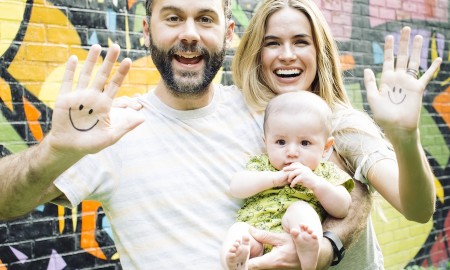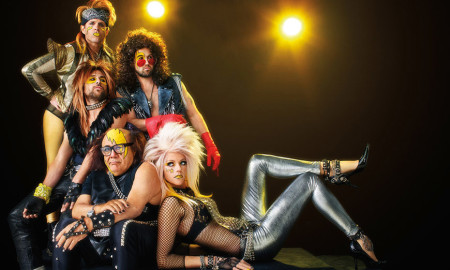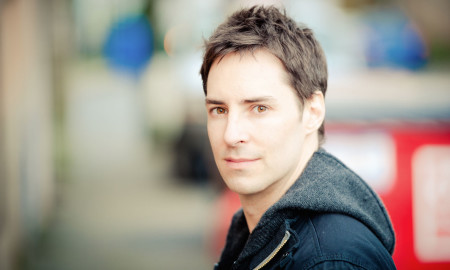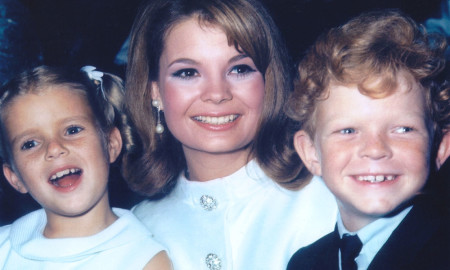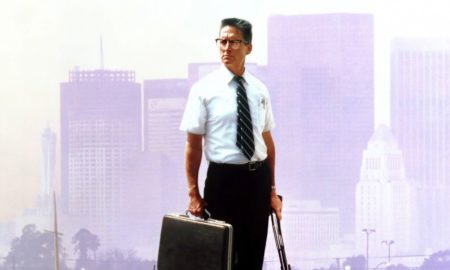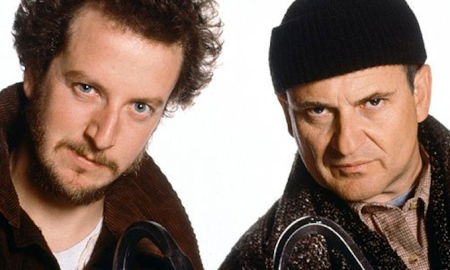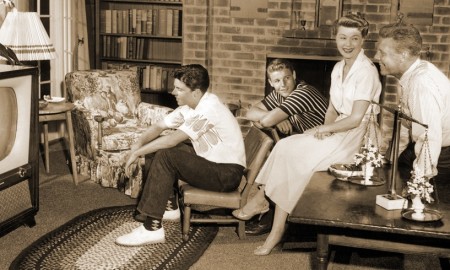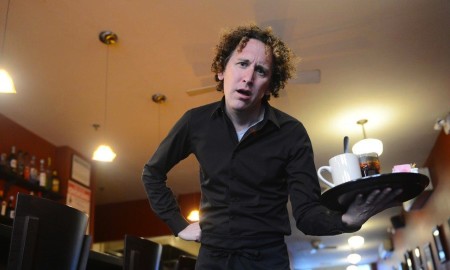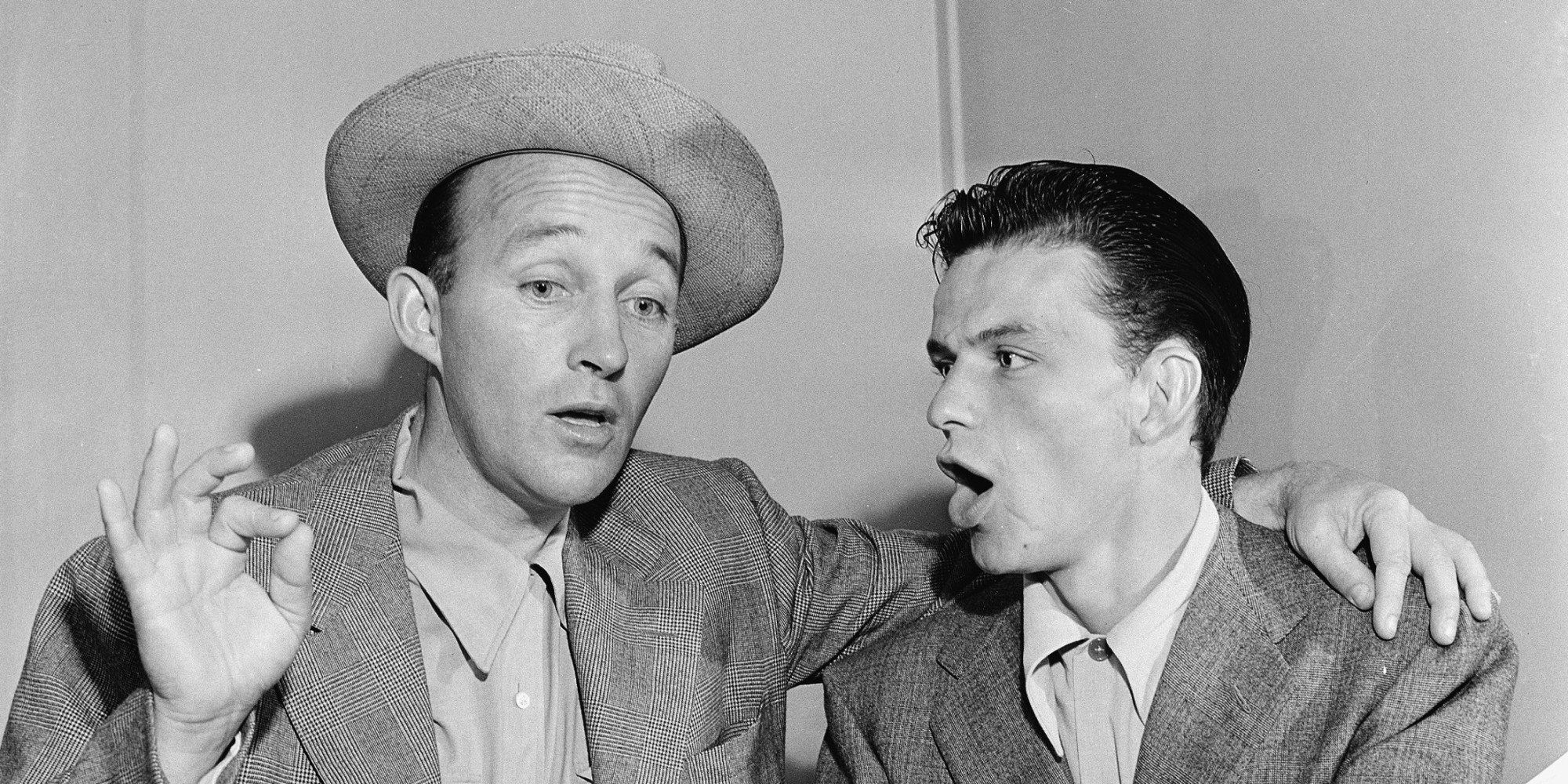

Hard to believe today, but there was a time when America did not welcome the Irish and the Italians, and the Irish and Italians turned on each other. Paul Moses, a journalism professor at Brooklyn College/CUNY, writes about a less enlightened age when everybody obsessed on race, prejudice led to bodily harm, and ugly stereotypes got in the way of rational thinking.
Oh, wait.
Not today, where all that still happens, but 100 years ago or so.
Still, Paul leaves us with an optimistic thought: perhaps, at some point, other groups can get to know and respect eachother, co-exist in a productive way and forge a promising future together.
If the Irish and Italians could do it, anybody can. Here’s how they did it.
We talk to Paul about his book, An Unlikely Union: The Love-Hate Story of New York’s Irish and Italians, and how the stew was stirred and the pasta came to a boil.
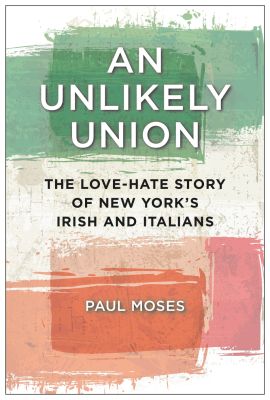 How did this idea occur to you?
How did this idea occur to you?
It just kind of grew out of my own family. I’m half Italian. My wife, Maureen, has Irish ancestory. We have a good marriage. We’ve been married for 39 years. And I just started to see a story in that. I grew up hearing stories that at one time, the Irish and the Italians were really at it. It’s just the arc of the story [that interested me]: how do we get from that place to the place we are now?
Was it a difficult book to research?
Yes, it was, because it covered a long period of time. In historical research, you have to read as many accounts of the subject as you can. But it was fun research. A lot of it surfaced through old newspaper accounts. The newspapers were very quick to see the animosity between the Irish and the Italians. The Catholic Church archives had letters that people wrote that were helpful.
Why these two groups? Why were the Irish and the Italians bound together by fate?
I think part of it is that they share the same religion. When the Irish came, they established themselves in a Protestant country. They weren’t happy about competing with the Italians for jobs. But, being first, the Irish still had the responsibility, because what the Italians did ultimately reflected on the Catholic Church. The factor of the common religion between the Irish and the Italians meant that they had to deal with each other.
There were not that many African-Americans in New York until later on. By the Fifties and Sixties, especially in politics, you see the Irish and the Italians coming together as a reaction to the new groups coming in.
Why the love/hate?
Love because they intermarried on a large scale. Hate because they fought it out in the streets, and some other arenas. Even in the church, there were some angry words exchanged. And in the civil service, and in politics. There were violent feuds, shootings and stabbings. Other people were good at working across the lines.
The intermarriage between the two groups must have been shocking and scandalous, at least in the beginning.
Certainly, the older generation, in many cases, would not be happy. I have one story in the book where a father actually comes out with a shotgun, confronting the Irish-American suitor for his Italian-American daughter. In other cases, there may have been a silent treatment, or not welcoming the new spouse into the family. Evenutally, in most cases, people seemed to get along, finding out that the other side wasn’t so bad.
We call them The Greatest Generation, so this is one more great thing: They broke the Irish/Italian barrier, through intermarriage after World War II.
To me, it was just that as people mixed and got to know each other, they liked each other. The boundaries were crossed eventually.
Of course, both the Irish and the Italians, separately and together, went on to become some of the most successful and accomplished Americans.
There is a certain status in American culture in being Irish, I think, because the Irish, early on, proved themselves. They became the image of being patriotic. And the Italians had food. The Irish loved the Italian food.
For Italians, the region of Italy where they come from is also important. Now, it’s mostly in gesture and joke, but at one time, those things mattered. And to the public at large, going back to the early 20th century, Northern Italians were considered to be a class apart from Southern Italians.
Hard to believe now, but the rivalry between crooners Frank Sinatra and Bing Crosby had a mildly ethnic competitive element to it.
In the end, the public did not see it as an ethnic thing, but just which music they liked better. That was just about the time when both groups were starting to come together.
Al Capone is associated with Chicago, but he had a New York connection and an Irish wife.
He was born in Brooklyn, and he worked for Johnny Torrio, and when Torrio went to Chicago, Capone followed him. It’s actually represented very faithfully in Boardwalk Empire, the whole story with the Capone character coming back to Brooklyn. I thought they did that very well.
You see the Capone character being very concerned about his son, who has a hearing problem. Capone lived on Garfield Place [Brooklyn], and the house is still there. I dropped by to see it. I saw an elderly woman talking on a lawn chair at the side of her house [near the Capone house], and she told me all about Capone as if he just moved out.
Both groups are associated with organized crime, but the it really stuck to the Italians. Why?
The Irish had James Cagney playing the prototype of the Irish gangster, and that, I think, inspired some of the swagger of the Italian gangsters. The Irish did serve as a sort of model.
The Italians, very early on, were being tagged as “prone to crime.” I don’t think it was fair. The number of Italians who were actually getting convicted of crimes was not high, when you consider that most of the Italian population at the time were young men. An Italian cop in the 1880s said, “Whenever an Italian commits a crime, it’s in large print.” So very early on, this image came up.
Italy had a more severe criminal justice system than the United States, so Italian criminals were able to flee to America. So there were some people who came over who were undesirables. But the Mafia as we know it didn’t take shape until later on. Prohibition helped it grow a lot.
New York’s Little Italy, long associated with Italian immigrants and later Italian restaurants, is disappearing.
It’s no longer where Italians live. It’s mostly a tourist attraction. Many Italians live on Staten Island now. It’s heavily Italian.
What was the takeaway for you as you finished the book?
I was surprised at how deep the schism went between the Irish and the Italians. I didn’t know that the rivalry was as intense as it was.
I was surprised at how my grandfather and his generation of Italian immigrants were viewed in America. It’s a humbling thing. The best minds of the day considered Italians to be genetically inferior, especially Southern Italians. They thought they would never be fit to be Americans, or morally fit to be Americans. It really heightened my appreciation for my grandfather’s generation.
They had tremendous pride. There is this stereotype of Italians being loud and boisterous, but I think the true picture is that many of them were quiet and curious. And filled with pride. This generation of immigrants had such deep pride that they were not humiliated by what the Irish or the native Americans were saying about them. They knew who they were. But that’s just how great the struggle was. Many were illiterate and barely spoke English at all, but were able to establish themselves.
When you look at the depth of how badly the Irish and the Italians got along and then that they married each other, you have to wonder if other ethnic tensions that we see today might resolve over time too. And how does that happen? In a nutshell, it’s when different kinds of people get to know each other as equals. They may share similar kinds of jobs and they take part in community activities or go to school together. I think, over time, that does make a difference. I think that is one of the lessons of the Irish/Italian story, which is that things can get better.
Check out the book here.


